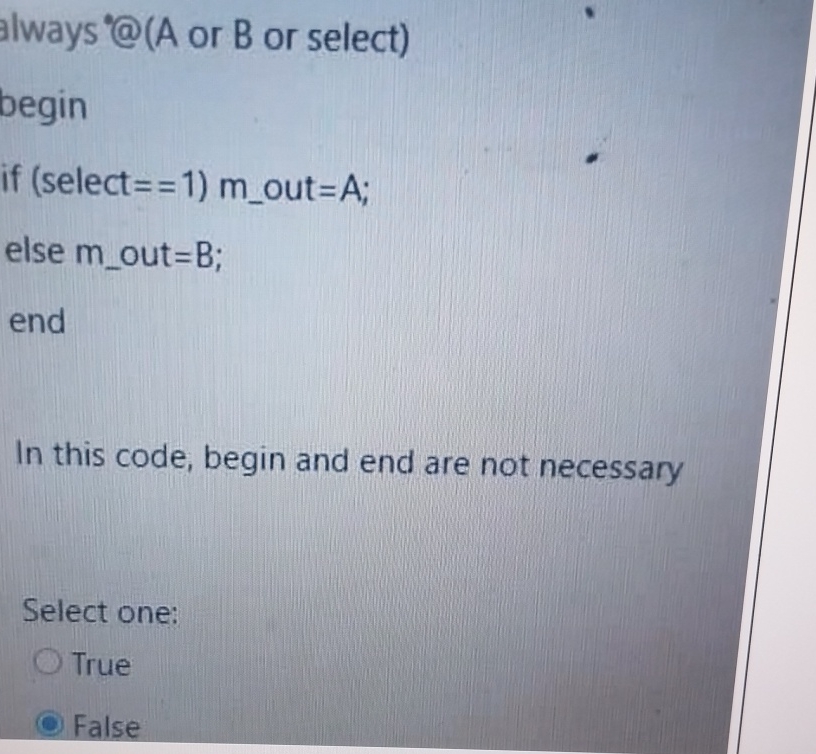Answered step by step
Verified Expert Solution
Question
1 Approved Answer
always @ @ ( A or B or select ) begin if ( select = = 1 ) m _ out = A; else m
always @ @A or B or select
begin
if select moutA;
else moutB;
end
In this code, begin and end are not necessary
Select one:
True
False

Step by Step Solution
There are 3 Steps involved in it
Step: 1

Get Instant Access to Expert-Tailored Solutions
See step-by-step solutions with expert insights and AI powered tools for academic success
Step: 2

Step: 3

Ace Your Homework with AI
Get the answers you need in no time with our AI-driven, step-by-step assistance
Get Started


